- Manchester is the third of the two cities.
- Preface outlines Dickens' influence on the story.
- Dickens wrote play "The Frozen Deep" in 1857.
- Dickens fell in love with a woman named Ellen.
- Ellen influenced the character Lucie in A Tale of Two Cities.
- By 1857 his marriage was falling apart and got a divorce.
- April, 30, 1859 Dickens publishes chapters 1-3 of A Tale of Two Cities.
- Dickens knew every inch of London.
- Dickens hated but loved London.
- Dickens loved Paris and went there 15 times between the years 1844-1868.
- A Tale of Two Cities was one of two historical novels Dickens wrote, it covered the years leading up to the 1785 French Revolution and the years following.
- The main characters were based off of Dickens and other people in his life.
- Dickens thought that A Tale of Two Cities was the best book ever written.
Translate
Thursday, January 31, 2013
Tale of Two Cities Lecture notes.
Saturday, January 26, 2013
Smart Goal
My goal to be accepted into a four year college and major in computer graphics. My number one choice would be UC Irvine. After graduating, I would like to attain a job as a digital effects artist for movies. I would also like to pursue water polo in college and make the travel team.
Wednesday, January 23, 2013
Lit terms 6-30
6. Analogy- a comparasin between two things to show the similarities.

7. Analysis- a method in which a work or idea is separated into its parts, and those parts given rigorous and detailed scrutiny.

8. Anaphora- a device or repetition in which a word or words are repeated at the beginning of two ore more lines, phrases, clauses, or sentences.

9. Anecdote- a very short story used to illustrate a point.

10. Antagonist- a person or force opposing the protagonist in a drama or narrative.

11. Antithesis- a balancing of one term against another for emphasis or stylistic effectiveness.

12. Aphorism- a terse, pointed statement expressing some wise or clever observation about life.

13. Apologia- a defense or justification for some doctrine, piece of writing , cause , or action; also apology.

14. Apostrophe- a figure of speech in which an absent or dead person, an abstract quality, or something inanimate or nonhuman is addressed directly.
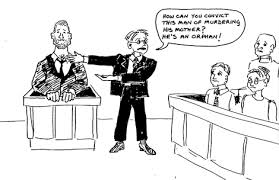
15. Argument- the process of convincing a reader by proving either the truth or the falsity of an idea or proposition; also, the thesis or proposition itself.

16. Assumption- the act of supposing, or taking for granted that a thing is true.
I assume that this is fake.

17. Audience- the intended listener or listeners

18. Characterization- the means by which writer reveals a character's personality.
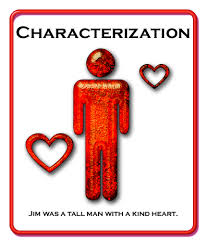
19. Chiasmus- a reversal in the order off words so that the second half of a statement balances the first half in inverted word order.

20. circumlocution- a roundabout or evasive speech or writing, In which many words are used but a few would have served.

21. Classicism- art, literature, and music reflecting the principles of ancient Greece and Rome: tradition, reason, clarity, order, and balance
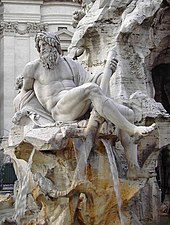
22. Cliché- a phrase or situation overused within society..

23. Climax- the decisive point in the narrative or drama; the pint of greatest intensity or interest at which plot question is answered or resolved.
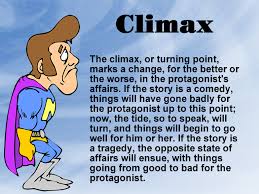
24. Colloquialism- folksy speech, slang words or phrases usually used in informal conversation.
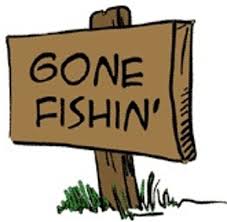
25. Comedy- originally a nondramatic literary piece of work that was marked by a happy ending; now a term to describe a ludicrous, farcical, or amusing event designed provide enjoyment or produce smiles and laughter.
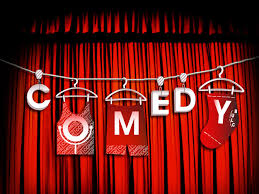
26. Conflict- struggle or problem in a story causing tension

27.Connotation- implicit meaning, going beyond dictionary definition
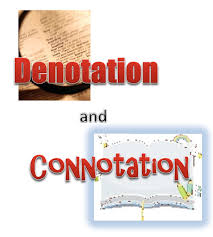
28.Contrast- a rhetorical device by which one element (idea or object) is thrown into opposition to another for the sake of emphasis or clarity.

29.Denotation- plain dictionary definition
See 27. ^
30.Denouement- loose ends tied up in a story after the climax, closure, conclusion.


7. Analysis- a method in which a work or idea is separated into its parts, and those parts given rigorous and detailed scrutiny.

8. Anaphora- a device or repetition in which a word or words are repeated at the beginning of two ore more lines, phrases, clauses, or sentences.

9. Anecdote- a very short story used to illustrate a point.

10. Antagonist- a person or force opposing the protagonist in a drama or narrative.

11. Antithesis- a balancing of one term against another for emphasis or stylistic effectiveness.

12. Aphorism- a terse, pointed statement expressing some wise or clever observation about life.

13. Apologia- a defense or justification for some doctrine, piece of writing , cause , or action; also apology.
14. Apostrophe- a figure of speech in which an absent or dead person, an abstract quality, or something inanimate or nonhuman is addressed directly.
15. Argument- the process of convincing a reader by proving either the truth or the falsity of an idea or proposition; also, the thesis or proposition itself.

16. Assumption- the act of supposing, or taking for granted that a thing is true.
I assume that this is fake.

17. Audience- the intended listener or listeners

18. Characterization- the means by which writer reveals a character's personality.
19. Chiasmus- a reversal in the order off words so that the second half of a statement balances the first half in inverted word order.
20. circumlocution- a roundabout or evasive speech or writing, In which many words are used but a few would have served.

21. Classicism- art, literature, and music reflecting the principles of ancient Greece and Rome: tradition, reason, clarity, order, and balance

22. Cliché- a phrase or situation overused within society..

23. Climax- the decisive point in the narrative or drama; the pint of greatest intensity or interest at which plot question is answered or resolved.
24. Colloquialism- folksy speech, slang words or phrases usually used in informal conversation.
25. Comedy- originally a nondramatic literary piece of work that was marked by a happy ending; now a term to describe a ludicrous, farcical, or amusing event designed provide enjoyment or produce smiles and laughter.
26. Conflict- struggle or problem in a story causing tension
27.Connotation- implicit meaning, going beyond dictionary definition
28.Contrast- a rhetorical device by which one element (idea or object) is thrown into opposition to another for the sake of emphasis or clarity.
29.Denotation- plain dictionary definition
See 27. ^
30.Denouement- loose ends tied up in a story after the climax, closure, conclusion.
Tuesday, January 15, 2013
Lit Terms 1-5
1. Allegory-
In my opinion, this is an allegory of Christmas. It is showing a "tail" tale of how North America wants more and more and is pushing out of their boundaries which is consuming them in darkness. South America area is content with what they have which is why they are golden.

2. Alliteration-
An angry alligator ate an apple at an airport.
3. Allusion-

4. Ambiguity-
Nobody knows why Mona Lisa is smiling and people have different interpretations of her facial expression.

5. Anachronism-

In my opinion, this is an allegory of Christmas. It is showing a "tail" tale of how North America wants more and more and is pushing out of their boundaries which is consuming them in darkness. South America area is content with what they have which is why they are golden.

2. Alliteration-
An angry alligator ate an apple at an airport.
3. Allusion-
4. Ambiguity-
Nobody knows why Mona Lisa is smiling and people have different interpretations of her facial expression.

5. Anachronism-

Friday, January 11, 2013
AP prep post "Siddhartha"
1. If you were the river, would you be enlightenment or would you know enlightenment? In other words, what’s up with the river? What is it’s relation to enlightenment?
2. What does enlightenment look like in Siddhartha? Is it a feeling? An attitude?
3. What purpose does self-denial serve in Siddhartha? What about self-indulgence?http://www.shmoop.com/siddhartha/questions.html
4. Siddhartha features substantial activity and narrative action. At the same time, it is about one man’s largely internal spiritual quest. What is the relationship between the internal and exterior worlds of Siddhartha? How does Siddhartha negotiate these worlds?
5. Herman Hesse’s novels before Siddhartha focused on alienated young men who rejected the cultures of their upbringings. However, these other novels did not feature the spiritual elements of Siddhartha. How do the spiritual elements of Siddhartha make it different from any other story of an alienated youth?
http://danig14.blogspot.com/2013/01/1.html#!/2013/01/1.html
To answer these questions, I would have to completely reread the book. I remember very little of it, but I feel like if I did reread Siddhartha, these questions wouldn't be too hard. I would just have to read it carefully and make sure that I understand it all.
2. What does enlightenment look like in Siddhartha? Is it a feeling? An attitude?
3. What purpose does self-denial serve in Siddhartha? What about self-indulgence?http://www.shmoop.com/siddhartha/questions.html
4. Siddhartha features substantial activity and narrative action. At the same time, it is about one man’s largely internal spiritual quest. What is the relationship between the internal and exterior worlds of Siddhartha? How does Siddhartha negotiate these worlds?
5. Herman Hesse’s novels before Siddhartha focused on alienated young men who rejected the cultures of their upbringings. However, these other novels did not feature the spiritual elements of Siddhartha. How do the spiritual elements of Siddhartha make it different from any other story of an alienated youth?
http://danig14.blogspot.com/2013/01/1.html#!/2013/01/1.html
To answer these questions, I would have to completely reread the book. I remember very little of it, but I feel like if I did reread Siddhartha, these questions wouldn't be too hard. I would just have to read it carefully and make sure that I understand it all.
Subscribe to:
Comments (Atom)